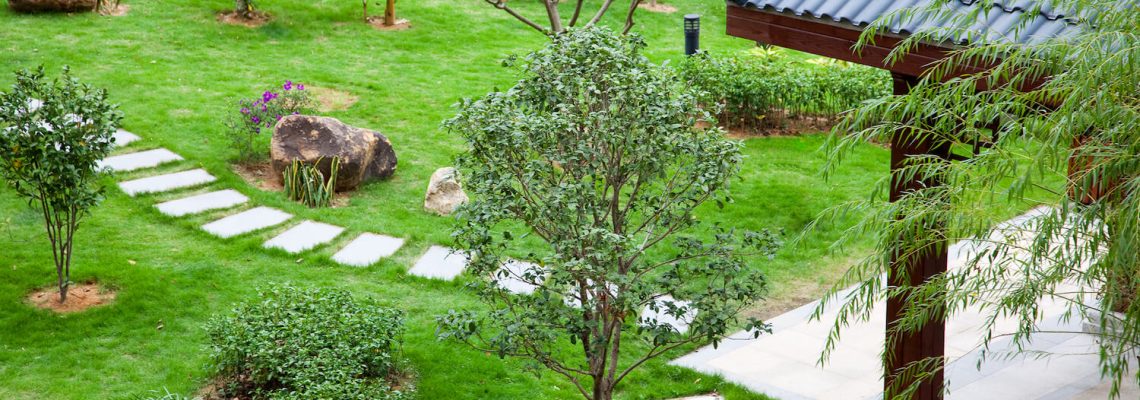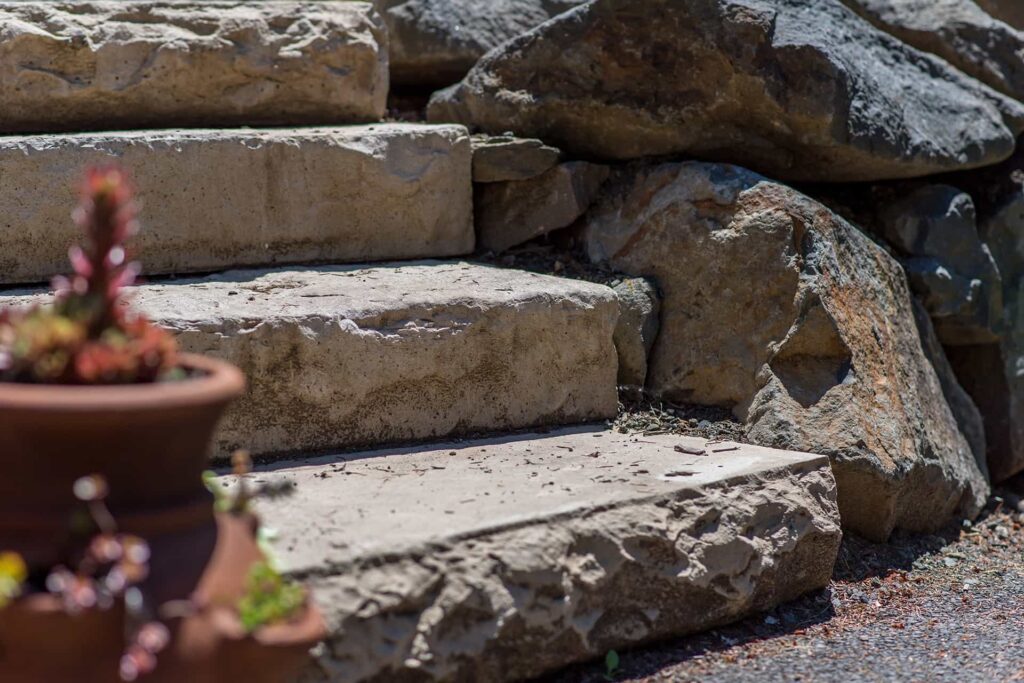In the realm of landscape design, where form meets function, the choice of materials plays a pivotal role in shaping the aesthetics and functionality of outdoor spaces. Stone, a timeless and versatile material, has been employed for centuries in various architectural and landscaping applications. One of the elements where stone truly shines is in the creation of steps. Stone steps not only serve a functional purpose by providing elevation changes but also contribute significantly to the overall visual appeal and atmosphere of a landscape.
In this article, we delve into the multifaceted advantages of incorporating stone steps into landscape design, exploring how they transcend mere functionality to become integral elements of outdoor spaces.
Historical Significance
The use of stone in landscaping is deeply rooted in history, dating back to ancient civilizations. Stone steps, in particular, have a rich historical significance. From the majestic staircases of ancient Greek temples to the intricate step wells of India, civilizations across the globe have recognized the durability and aesthetic appeal of stone steps. Today, the incorporation of stone steps in modern landscape design pays homage to this historical tradition, connecting the contemporary with the timeless.
Visual Landscape Appeal
One of the most apparent advantages of stone steps lies in their visual appeal. Stone, with its natural textures, colors, and patterns, adds a sense of authenticity and charm to outdoor spaces. Whether carved from limestone, granite, or slate, each type of stone brings its unique character to the landscape. The variations in color and texture create a visually dynamic and pleasing environment. Moreover, stone steps can be crafted in various shapes and sizes, allowing for the creation of intricate patterns or simple, elegant designs that complement the overall aesthetic of the landscape.
Integration with Natural Surroundings
Unlike man-made materials, stone has an inherent ability to blend seamlessly with natural surroundings. Stone steps, when carefully selected and arranged, can mimic the organic patterns found in the environment. This integration with the natural landscape enhances the overall harmony and balance of the outdoor space. Whether nestled in a lush garden or leading up a hillside, stone steps become an organic extension of the landscape, enhancing rather than disrupting the natural beauty.
Stone Durability and Longevity
In the realm of landscape design, durability is a key consideration. Stone steps stand the test of time, resilient against the elements and foot traffic. Unlike wood, which may deteriorate over time, or concrete, which can crack and chip, stone maintains its structural integrity for decades. This durability not only reduces maintenance costs but also ensures that the beauty of the landscape remains intact, season after season.
Versatility in Design
The versatility of stone as a material opens up a myriad of design possibilities for landscape architects and homeowners alike. Stone steps can be crafted to suit various styles, from rustic and natural to sleek and modern. The flexibility in design allows for the creation of custom steps that cater to the specific needs and preferences of the space. Whether you envision a grand staircase leading to a terrace or a series of small steps meandering through a garden, stone can be tailored to bring your design concept to life.
Eco-Friendly Choice
In an era where sustainability is at the forefront of design considerations, the use of stone steps aligns with eco-friendly practices. Stone is a natural, renewable resource that requires minimal processing compared to some other construction materials. Additionally, the longevity of stone steps means fewer replacements and less waste over time. Choosing stone steps for landscape design is a conscious decision towards a greener and more sustainable approach to outdoor spaces.
Functionality Beyond Elevation
While the primary function of stone steps is to facilitate changes in elevation, they can serve additional purposes that contribute to the functionality of outdoor spaces. Stone steps can be strategically placed to define pathways, create focal points, or guide the flow of foot traffic. Incorporating seating areas within or alongside stone steps adds a social dimension to the landscape, providing spaces for relaxation and contemplation. This multifunctional aspect enhances the overall usability of the outdoor environment.
Safety and Traction Benefit
Safety is a paramount concern in landscape design, especially in areas with elevation changes. Stone steps, when properly designed, provide excellent traction, reducing the risk of slips and falls. The natural texture of many types of stone enhances grip, making them a practical choice for outdoor stairs. This safety aspect is particularly important in regions with varying weather conditions, where surfaces may become slippery due to rain, snow, or frost.
Low Maintenance Requirements
The low maintenance requirements of stone steps contribute to their appeal in landscape design. Unlike wood, which may need regular staining or sealing, and concrete, which can develop cracks over time, stone steps generally require minimal upkeep. Occasional cleaning to remove dirt or debris is often sufficient to keep them looking pristine. This characteristic makes stone steps an attractive option for homeowners and landscape designers seeking a beautiful yet low-maintenance solution.
Local and Global Availability
Stone is a widely available material globally, and many regions boast their unique varieties of stone. This local availability reduces transportation costs and the associated environmental impact. Additionally, the use of locally sourced stone aligns with the principles of sustainable design, supporting regional economies and reducing the carbon footprint associated with transportation.
Safety and Traction
Safety is a paramount concern in landscape design, especially in areas with elevation changes. Stone steps, when properly designed, provide excellent traction, reducing the risk of slips and falls. The natural texture of many types of stone enhances grip, making them a practical choice for outdoor stairs. This safety aspect is particularly important in regions with varying weather conditions, where surfaces may become slippery due to rain, snow, or frost.
Low Maintenance Requirements
The low maintenance requirements of stone steps contribute to their appeal in landscape design. Unlike wood, which may need regular staining or sealing, and concrete, which can develop cracks over time, stone steps generally require minimal upkeep. Occasional cleaning to remove dirt or debris is often sufficient to keep them looking pristine. This characteristic makes stone steps an attractive option for homeowners and landscape designers seeking a beautiful yet low-maintenance solution.
Local and Global Availability
Stone is a widely available material globally, and many regions boast their unique varieties of stone. This local availability reduces transportation costs and the associated environmental impact. Additionally, the use of locally sourced stone aligns with the principles of sustainable design, supporting regional economies and reducing the carbon footprint associated with transportation.
Harmony with Water Features
An often overlooked advantage of stone steps is their ability to harmonize seamlessly with water features in a landscape. Whether they are incorporated into a waterfall, crossing over a babbling brook, or leading to a serene pond, stone steps complement the fluidity and natural allure of water. The combination of stone and water creates a soothing ambiance, inviting individuals to engage with the landscape on a sensory level. The durability of stone ensures that these steps remain resilient in aquatic environments, standing up to the challenges posed by constant moisture.
Conclusion
In the evolving tapestry of landscape design, stone steps emerge not only as practical components facilitating movement but also as storytellers, artists, and contributors to the overall harmony of outdoor spaces. Their safety features, low maintenance requirements, and ability to integrate seamlessly with water features make them versatile elements in landscaping. As conduits between different elevations, stone steps become a canvas for artistic expression and a link to cultural heritage. By recognizing and embracing the multifaceted advantages of stone steps, we embark on a journey that goes beyond the functional, creating outdoor spaces that are not just traversed but experienced, appreciated, and remembered. In the hands of skilled designers, stone steps become transformative elements, shaping landscapes that transcend the ordinary and resonate with the timeless beauty of the natural world.


